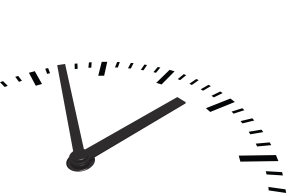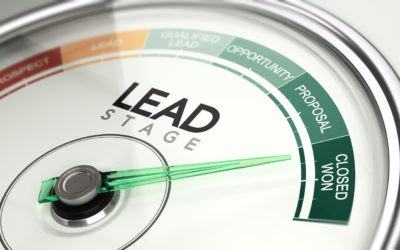 Lead generation is an important step in the sales process, but the investment you put into gaining those leads is useless unless you close them. For most leads, the ability to close depends upon how quickly you follow up on that lead. Through developing a follow up timeline, scoring leads, and creating a process for your sales team, you can greatly increase the response of leads and the close rate for your product.
Lead generation is an important step in the sales process, but the investment you put into gaining those leads is useless unless you close them. For most leads, the ability to close depends upon how quickly you follow up on that lead. Through developing a follow up timeline, scoring leads, and creating a process for your sales team, you can greatly increase the response of leads and the close rate for your product.
How Fast Should I Respond?
Speed is of the essence when following up with leads, and chances are you’re either fast enough, or way, way too slow. According to the Harvard Business Review:
- 26% of companies respond within five minutes of an inquiry
- 27% of companies respond between five minutes and 24 hours of an inquiry
- A whopping 47% respond after 24 hours or don’t respond at all to an inquiry
Those that respond within an hour of inquiry are seven times more likely to get a response from and qualify that lead. In other words, perfectly good leads will be missed if they aren’t attended to quickly enough.  Many drop off because of lost interest in that short amount of time. Even leads that are more complex, such as attorney or rehabilitation consultations, require a near-instant response. Your leads are more likely to shop around during this period, and if another salesman follows up quicker, they’re more likely to choose your competitor than take the risk of waiting for you.
Many drop off because of lost interest in that short amount of time. Even leads that are more complex, such as attorney or rehabilitation consultations, require a near-instant response. Your leads are more likely to shop around during this period, and if another salesman follows up quicker, they’re more likely to choose your competitor than take the risk of waiting for you.
Developing a Timeline
Having a set timeline with deadlines can help prevent procrastination and create a more consistent follow-up schedule. When developing a schedule, keep these questions in mind:
- What is the ideal amount of time required for following up on a lead?
- What is the maximum amount of time allotted for following up on a lead?
- What follow-up tasks should be completed within that amount of time?
- How many times should the follow-up be completed before a lead is considered a lost cause?
The timeline should be developed with structured limits, but be simple enough to be followed easily by your sales team. The timeline is meant  to create a sense of urgency for contacting leads, and shouldn’t be too complex. If too many conditions are applied (e.g. if follow-up occurs between hour 1 and hour 2, send this email), the process becomes too tedious, and follow-up times could slow down. Although it can seem like ASAP is the ideal amount of time for the follow-up, having a relative timeline like that can easily turn into an exercise in procrastination. Be sure to set definite deadlines to prevent this.
to create a sense of urgency for contacting leads, and shouldn’t be too complex. If too many conditions are applied (e.g. if follow-up occurs between hour 1 and hour 2, send this email), the process becomes too tedious, and follow-up times could slow down. Although it can seem like ASAP is the ideal amount of time for the follow-up, having a relative timeline like that can easily turn into an exercise in procrastination. Be sure to set definite deadlines to prevent this.
Scoring Leads
Scoring leads beforehand will lend more room for following up on those that are worth the time and effort. Leads you’ve generated from your website are not created equally, and the urgency to get in touch with certain leads is going to be much higher than others.
According to MarketingSherpa, scoring leads before sending them onto sales can increase conversions up to 79%.
When scoring leads, keep your target audience in mind. They are the type of leads who are most likely to close, and because of that, they should be the leads that are followed up on the quickest. Essentially, scoring your leads is a matter of determining the “hotness” of a lead before it ends up in your sales team’s hand, leaving them more time to work other leads. Learn more about scoring leads.
Creating a Follow-Up Process
 With the right follow-up process, you’ll be able to avoid missing out on leads that aren’t part of your prime audience, but are still worthwhile. This process will be incorporated into your timeline, so make sure it’s easily followed and each task required is worthwhile to your lead. Below are some of the considerations when developing your process:
With the right follow-up process, you’ll be able to avoid missing out on leads that aren’t part of your prime audience, but are still worthwhile. This process will be incorporated into your timeline, so make sure it’s easily followed and each task required is worthwhile to your lead. Below are some of the considerations when developing your process:
- Which contact mediums are available (phone call, email, etc.)
- Which contact mediums would your leads prefer?
- What should your sales team say in each email? Should what they say change depending on the lead?
Also, you might consider using automations to follow up on some leads. Sending an email automatically after a form is filled out can keep your business in the lead’s mind.Although an automated email won’t close a lead like customized sales response or phone call, it can buy time on following up with your lead. Testing different processes is also important. Some tests you can try out include:
- Sending an email vs. calling vs. doing both
- Changing the content of the email or the script of a call
- Using non-traditional means like social media to contact leads
- Changing how many times a certain medium is used before the lead is considered lost
Fostering an Environment of Urgency
Think of sales like a restaurant – although ten minutes seems like nothing in the kitchen, to the customer waiting, it can feel like a long time. They can easily lose interest in this period of time, and a lead that was once viable is now gone. Following up on leads is so important because it’s completely in your control – the quickness of following up on leads is only limited by your ability to organize a timelines, score leads, and create a process that is simple and feasible. By improving the speed of your follow-up, you can increase conversions with little additional cost towards your business, instantly improving your ROI.




